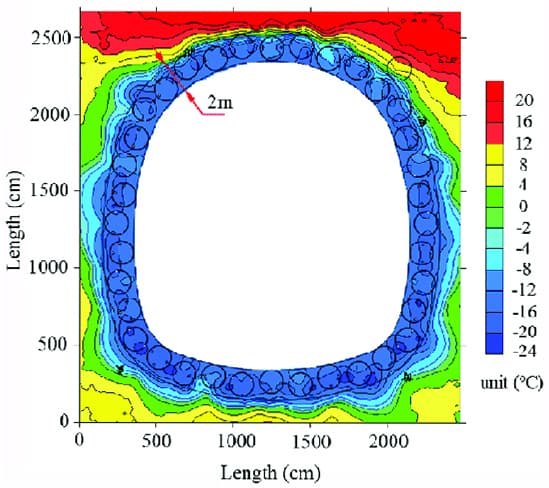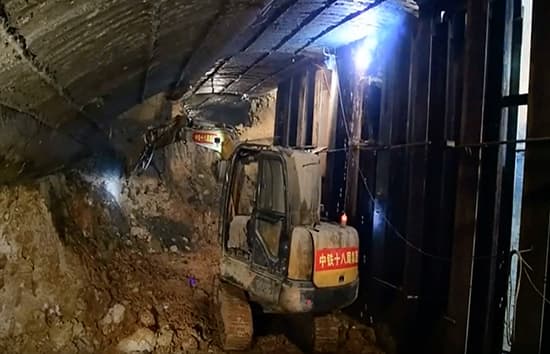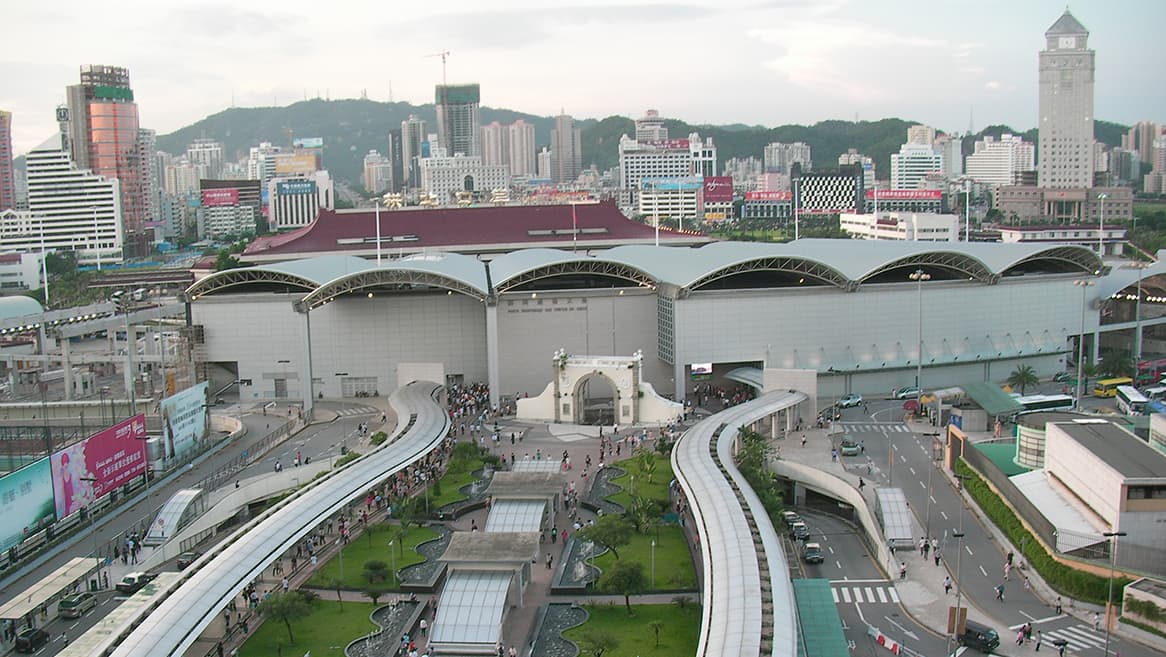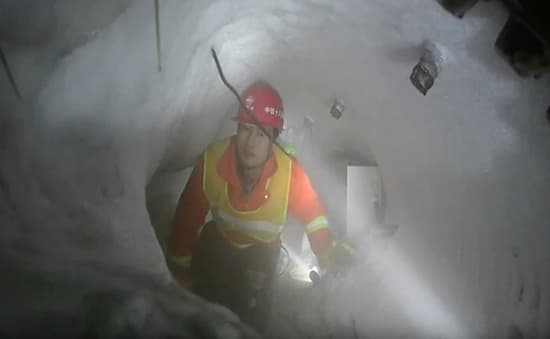Ice Used to Construct New Tunnel in China
- Youtube Views 2,792 VIDEO VIEWS
CHINESE engineers have completed a major new tunnel between Zhuhai and Macau using a highly experimental excavation method, as shown in this recent news footage.
A crucial 738 foot (255 metre) section of the 1.7 mile (2.7 kilometre) Gongbei Tunnel was built using the "freeze-sealing pipe roof" (FSPR) method, in which a thick crust of ice was formed around the future tunnel’s perimeter, allowing workers to carry out the excavation works without fears of flooding or collapse.

Above: Entrance of the Gongbei Tunnel (image courtesy of CCTV+). Below:
Cross section of the tunnel showing the position of the freezing tubes (image courtesy of Xiandong Hu and Tao Fan).

The innovative technique has previously been used in Germany and China, but the Gongbei Tunnel saw the most sophisticated large-scale application of the
approach to date.

Above: A heat gradient cross section showing the layer of frozen soil that enabled construction workers to excavate the tunnel within (image courtesy of Xiandong Hu and Tao Fan).
To create the freeze-sealing pipe roof, 36 cooling tubes, each 5.3 feet (1.6 metres) in diameter were driven between two tunnel shafts. Coolant was then passed through the tubes, freezing the ground around them. The tubes were left in-situ after construction.
The cooling capacity used during construction was equivalent to 100,000 home refrigerators.

Above: Excavation works within the Gongbei Tunnel (image courtesy of CCTV+).
The new tunnel is a side branch of the vast Hong-Kong-Zhuhai-Macau Bridge and passes along a dense network of roads and railways, as well as underneath a Macau-China border crossing checkpoint.

Above: The Gongbei tunnel passes between an existing Macanese checkpoint (foreground) and Chinese checkpoint (red roof in the background) (image courtesy of CCTV+).
The soft soil, consisting of waterlogged clay and rough sand, prevented a more conventional excavation method.
As the project neared completion in 2017, engineers had to dismantle the cooling mechanism manually in order to speed up the thawing process and prevent subsidence.

Above: A construction worker dismantling the cooling mechanism (image courtesy of CCTV+).
After four years of construction, the new tunnel is scheduled to open alongside the main Hong-Kong to Macau ocean crossing in June 2018.




